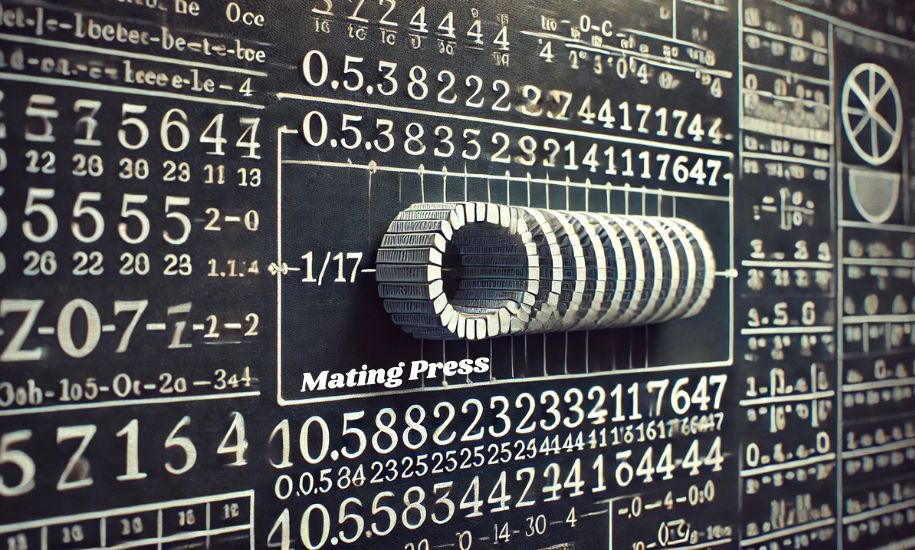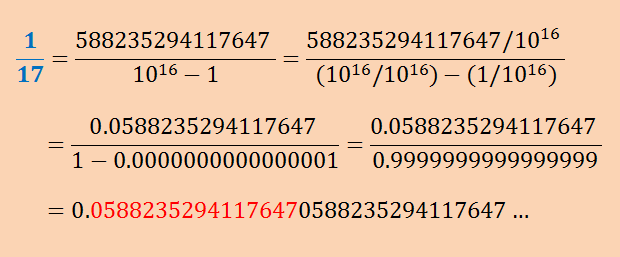
In the vast ocean of mathematics, some questions appear simple on the surface but conceal depths of complexity beneath. Today, we’re diving into one such enigma: What is the 300th digit of 0.0588235294117647? This seemingly straightforward query opens a portal to a fascinating world of number theory, repeating decimals, and the beauty of mathematical patterns.
The Number in Question

Let’s start by taking a closer look at our protagonist: 0.0588235294117647. At first glance, it might seem like just another decimal, perhaps the result of some obscure calculation. But oh, dear reader, it’s so much more than that!
This number is actually a familiar face in the world of fractions. Can you guess what it is? That’s right – it’s the decimal representation of 1/17. Who would have thought that such an unassuming fraction could lead us on such an intriguing mathematical journey?
Unraveling the Pattern
Now, let’s roll up our sleeves and dig into the meat of our question. To find the 300th digit, we need to understand the behavior of this decimal. And here’s where things get interesting.
If you look closely at 0.0588235294117647, you might notice something curious. Let’s break it down:
0.0 58823529411764 7
See that bolded sequence? It repeats! This is what mathematicians call a repeating decimal. The sequence 588235294117647 keeps recurring infinitely after the decimal point.
The Magic of Repetition
Why does this happen? It’s all due to the nature of dividing 1 by 17. When we perform this division, we get a remainder at each step, which becomes the dividend for the next step. Eventually, we start seeing the same remainders again, which leads to the repetition in the decimal places.
This repetition is not just beautiful – it’s incredibly useful for our quest. Instead of having to divide 1 by 17 three hundred times (imagine doing that by hand!), we can use this pattern to our advantage.
Crunching the Numbers
Let’s break this down step by step:
- The repeating sequence has 16 digits (588235294117647).
- The first two digits (0.) don’t repeat, so we’ll ignore them for now.
- To find the 300th digit, we need to figure out where in the sequence it falls.
Here’s where we get to flex our modular arithmetic muscles:
- 300 – 2 (for the leading 0.) = 298
- 298 ÷ 16 = 18 remainder 10
This tells us that after 18 full repetitions of our sequence, the 300th digit is the 10th digit in the next repetition.
The Big Reveal
So, what’s the 10th digit in our repeating sequence? Let’s count it out:
5 8 8 2 3 5 2 9 4 1 1 7 6 4 7
There it is! The 10th digit, and therefore the 300th digit of 0.0588235294117647, is 1.
Beyond the Answer: Why This Matters
Now, you might be thinking, “That’s all well and good, but why should I care about the 300th digit of some random decimal?” Excellent question! This journey we’ve taken is about so much more than just finding a single digit.
The Beauty of Mathematics
This problem showcases the elegant patterns that underlie mathematics. What seemed like a daunting task – finding the 300th digit of a number – became manageable once we understood the underlying structure. This is a microcosm of how mathematicians approach complex problems, breaking them down into understandable patterns.
Practical Applications
While finding the 300th digit of 1/17 might not seem immediately practical, the principles we’ve used have wide-ranging applications:
- Cryptography: Understanding how numbers behave is crucial for creating and breaking codes.
- Computer Science: Efficient algorithms often rely on recognizing and exploiting patterns in data.
- Finance: Repeating decimals play a role in calculating interest rates and other financial metrics.
The Joy of Discovery
There’s something inherently satisfying about unraveling a mystery, even a mathematical one. This process of inquiry and discovery is at the heart of scientific and mathematical progress.
A Broader Perspective
Let’s zoom out for a moment and consider what our little adventure with 1/17 tells us about the nature of numbers:
- Infinity in Finiteness: In just 16 digits, we captured an infinite decimal expansion. It’s a reminder of how the infinite can be encoded in the finite.
- The Predictability of Chaos: At first glance, the decimal expansion of 1/17 might look random. But there’s order in this apparent chaos – a lesson that applies to many areas of science and nature.
- The Power of Patterns: Recognizing and utilizing patterns allowed us to solve a problem that would have been tedious and error-prone to tackle directly.
Engaging with Mathematics
If this exploration has piqued your curiosity, here are some ways you can dive deeper:
- Try finding patterns in other fractions. What do you notice about 1/7, 1/13, or 1/19?
- Explore the concept of cyclic numbers. How do they relate to repeating decimals?
- Investigate how computers handle repeating decimals. How might you program an algorithm to find the nth digit of a repeating decimal?
In Conclusion
So, what began as a quirky question about the 300th digit of 0.0588235294117647 has taken us on a journey through repeating decimals, modular arithmetic, and the beauty of mathematical patterns. We’ve seen how a simple fraction can unfold into an infinite sequence, and how understanding that sequence can help us solve seemingly complex problems with ease.
The next time you encounter a fraction or a long decimal, take a moment to look for the patterns hiding within. You might just uncover a world of mathematical beauty, waiting to be explored.
And remember, in the grand tapestry of mathematics, every thread – even the 300th digit of 1/17 – has its place and its story to tell.
You Can Also Read Here Mrs. Geeder Rosenwald School: Celebrating a Legacy of Learning


